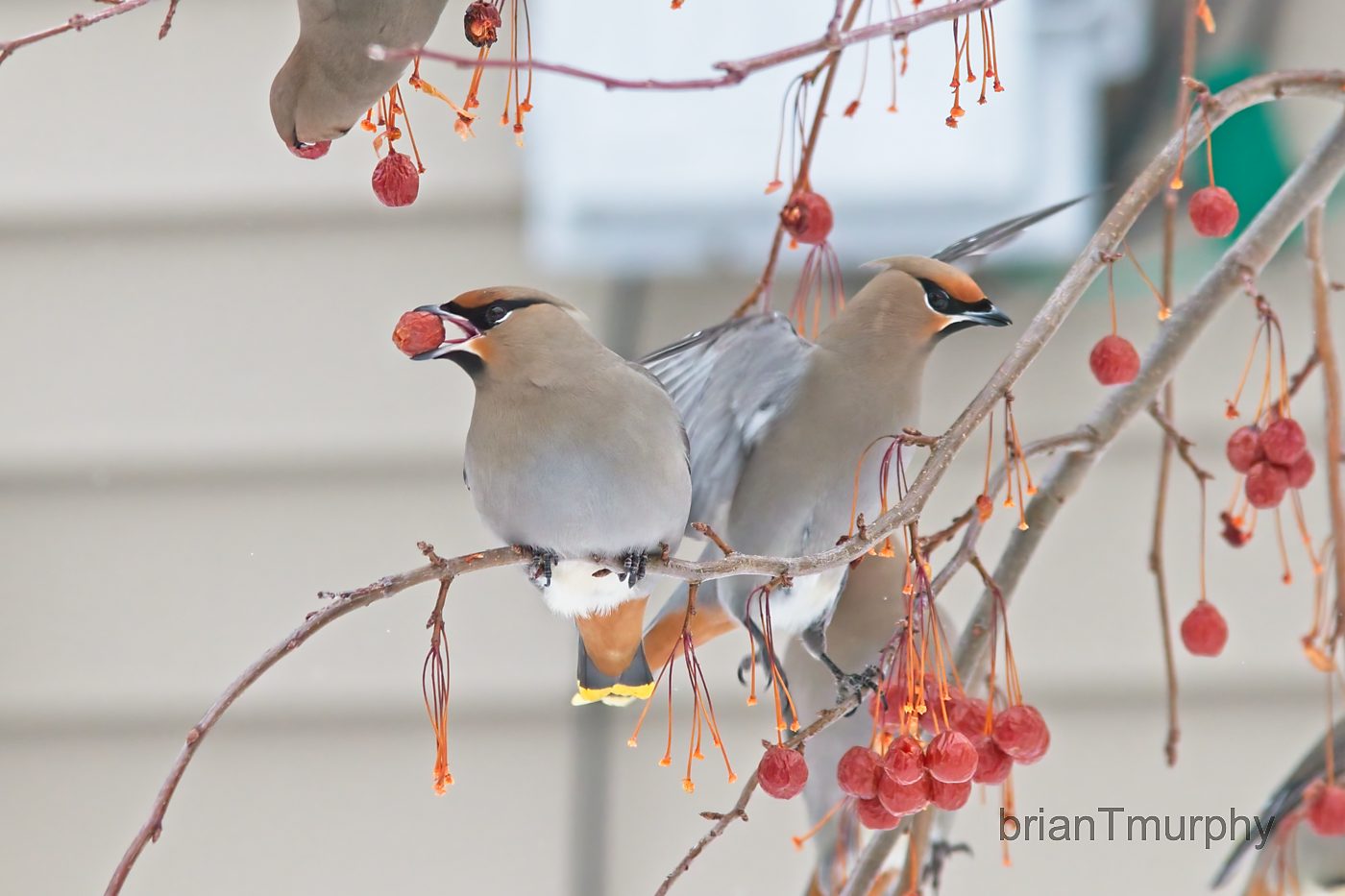Have you ever spotted a flock of what you thought were Cedar Waxwings that looked like they worked out at the gym daily? If so, you may have spotted one of the genuinely remarkable-looking winter bird species that visit Michigan each winter. They have a very unique name, Bohemian Waxwing (Bombycilla garrulus).

For decades, I hoped to see one in North Carolina each winter. No such luck. My first winter in Michigan, within a few days after arriving in Alger County, a flock of about 50 Bohemians flashed up from some fruit trees in the middle of town. A few winters later, they entertained us at our house in Marquette.

So, where do they come from?

Common breeder in Alaska and western and Central Canada. Fall migration begins in September, with birds sometimes not reaching southern limits until December or even February. During winter, they wander greatly, searching out food sources. This year, they first appeared in Marquette in late October.
bohemian
a: a person (such as a writer or an artist) living an unconventional life usually in a colony with others
b: VAGABOND, WANDERER

Identification
With a decent look at the bird, one can be fairly certain of Waxwing, but identifying which one can be challenging without a close-up view. The Bohemian Waxwing is a starling-sized bird, slightly larger in weight and much plumper than a Cedar Waxwing. Key differences are listed below the corresponding photos.
Bohemian Waxwing
- brownish gray, black mask, black chin
- white arc below the eye
- gray breast, paler gray rump
- red tips of secondaries, edges of primaries yellow and white
- tail blackish with broad bright yellow terminal band,
Cedar Waxwing
- silky brown color and crest
- pale-yellowish belly,
- whitish undertail coverts,
- overall brownish coloration,
- smaller dark chin-patch,
- lack of white markings on wings
- 31g vs 57g for Bohemian
Breeding and Habitat
Breeding grounds include Alaska, western Canada, and Eurasia from n. Scandinavia east across n. Russia to n. Siberia. Nests in spruce forests.
Breeds in boreal forest and muskeg. “Prefers relatively open forest or edge, usually coniferous, e.g. spruce (Picea), pine (Pinus), etc., but occasionally in birch (Betula) forest or mixed forest; favors well-drained areas near major rivers, normally including dense growth of fruiting plants. In non-breeding season found in wide variety of habitats with fruiting plants and at least scattered trees, including roadsides, gardens, farmland and edges of deciduous forest.”
Birds of the World

Diet
Early summer feeding includes fruits such as strawberries, blackberries, serviceberries, and later honeysuckles, and cherries. Insects are also on the menu for protein loading; birds will sally like a flycatcher. While on its wintering grounds, such as Marquette and Munising, the Bohemian Waxwing gorges itself on sugary fruits, including the invasive Russian Olive tree.


Behavior
It’s most definitely a very entertaining bird to observe. Very gregarious in winter, often in groups of 10-50 individuals. Lots of hopping and fluttering between branches, rarely on the ground. Watch for them perched high up in the bare trees of winter. The action can be truly astounding when they find a fruit-loaded tree. They will gorge themselves, sometimes stripping the tree clean.

“Birds feeding in winter can be especially docile, permitting close approach; these individuals vulnerable to predators, like domestic cats”
Birds of the World
Want to find Bohemian Waxwings in the UP?
Keep an eye on eBird reports. Join the Marquette WhatsApp bird alert. Be aware of trees with fruit and drive by daily. There are numerous locations in town, both Munising and Marquette, where you might luck into a flock devouring every single berry on the tree.

Vocalization
Below is a comparison of Bohemian vs Cedar Waxwing calls. Both species tend to call most when flying, which is quite the sound experience when they take off from a tree.
Bohemian Waxwing
Cedar Waxwing





NEXT MONTH – our most famous winter visitor, the Snowy Owl
Citations
- Pete Dunne Essential Field Guide Companion
- Cornell Lab of Ornithology
- Birds of the World (2022). Edited by S. M. Billerman, B. K. Keeney, P. G. Rodewald, and T. S. Schulenberg. Cornell Laboratory of Ornithology, Ithaca, NY, USA. https://birdsoftheworld.org/bow/home
- McCauley Lab
- Sibley, David, 1961-. The Sibley Field Guide to Birds of Eastern North America. New York :Alfred A. Knopf, 2003.
- Websters


